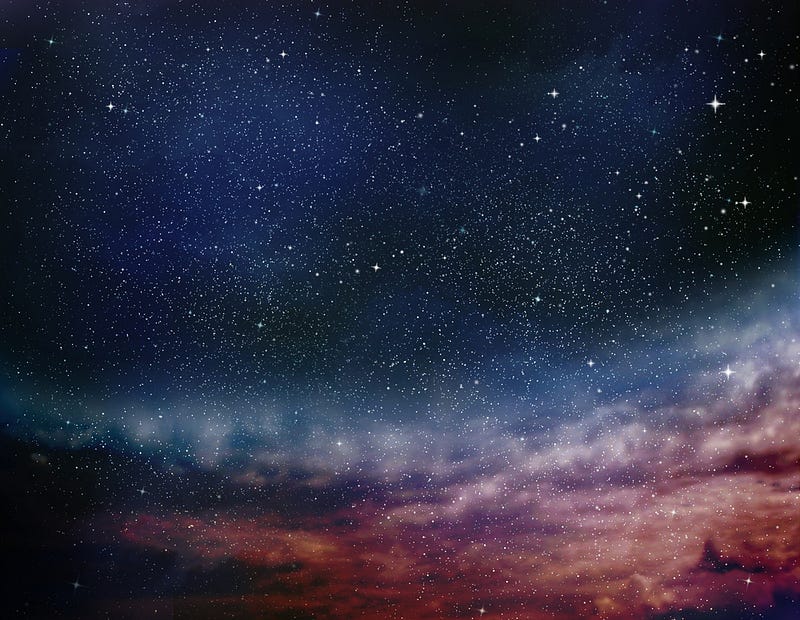NU Sci Explains: The Structure of a Star
By Katie McCreedy, Health Science, 2021

There’s something intangibly captivating about the vast darkness of the night sky — its stars twinkle and sparkle so distantly that they seem to exist in their own imaginary world. But, over many decades of research, astronomers have developed increasingly in-depth tests and chemical analyses to understand the composition and structure of those elusive stars.
One such technique is emission spectroscopy, which is used to capture the unique pattern in which a star’s hot gas molecules emit extra light. These wavelengths are unique to each element, so it is possible to understand what makes up a star by the wavelengths it emits. “What we observe of a star is the light that is emitted by its photosphere. This light is really the light that goes through the layers that are in its atmosphere and ours,” explained Alessandra Di Credico, an associate physics and astronomy professor at Northeastern University.
Imagine a star as an onion with distinct, separate layers. In the star’s case, each separate layer compresses the others, increasing pressure toward the intensely hot central core. A star exists in a state of hydrostatic equilibrium — meaning gravity forces these gaseous layers together, while the core exerts its own opposite pressure force outward onto the other layers. These opposing forces keep the star’s gaseous layers in its compact, circular form. In general, gaseous hydrogen molecules compose the outermost layer, then there are layers of helium, carbon, neon, oxygen, silicon, and finally a central iron core. These layers vary between stars, although usually heavier metals exist in the inner star core and lighter elements like helium and hydrogen exist in the outer layers.
Imagine a star as an onion with distinct, separate layers. In the star’s case, each separate layer compresses the others, increasing pressure toward the intensely hot central core.
How these distinct layers develop tells the story of how stars are born. At first, the star is composed of moving hydrogen molecules that form a dense center. As the atmospheric temperature at the center increases, the hydrogen molecules start to move more quickly, increasing the chance that they bump into each other. “They overcome their electrical repulsion and they feel their nuclear strength, which makes them stick to each other. So, at that point they create helium. The moment this starts, that’s when the star is born. For the sun, this happened many millions of years ago,” said Di Credico.
Because of their beautiful complexity, many myths about the composition of stars and the night sky exist. For one, the common belief that the sky is sprinkled full of visible stars is false. “Only a small portion of the visible sky are actually stars,” Di Credico added. This is because other planets emit light similarly to stars, so they also appear as distant white dots in the sky. Only the bright, outstanding dots in the sky actually constitute stars. Stars also do not twinkle because they are distant flickering fires, but instead they twinkle because of how their light enters Earth’s atmosphere. “The reason why they twinkle is due to the fact that the light that comes from the stars is very steady, but when it arrives to us it has to go through our dynamic atmosphere. So the interaction of that light with the atmosphere creates light patterns and that variation creates the twinkling,” continued Di Credico.
Over many decades of research, astronomers have developed increasingly in-depth tests and chemical analyses to understand the composition and structure of those elusive stars.
Despite their intricate layers and powerful gravitational balance, after billions of years stars still inevitably die in spectacular fashion. This happens in particular to very large stars, at least five times the size of the sun, that use up the nuclear fuel burning at their core to fuse the elements of their layers. When this fuel runs out, the star becomes much cooler and its delicate hydrostatic equilibrium fails. The pressure at the center of the star that was holding the gaseous layers together against the force of gravity drops, allowing the gravitational force to collapse the star in as quickly as 15 seconds. This catastrophic explosion is called a supernova. Large-enough supernovas ultimately result in an often fabled aspect of science fiction nightmare with its own mysteries and fascination — the black hole.
Astronomical science ultimately makes that seemingly mythical, distant sky of stars understandable through scientific inquiry. Still, looking up on a clear night bestows no less wonder.
